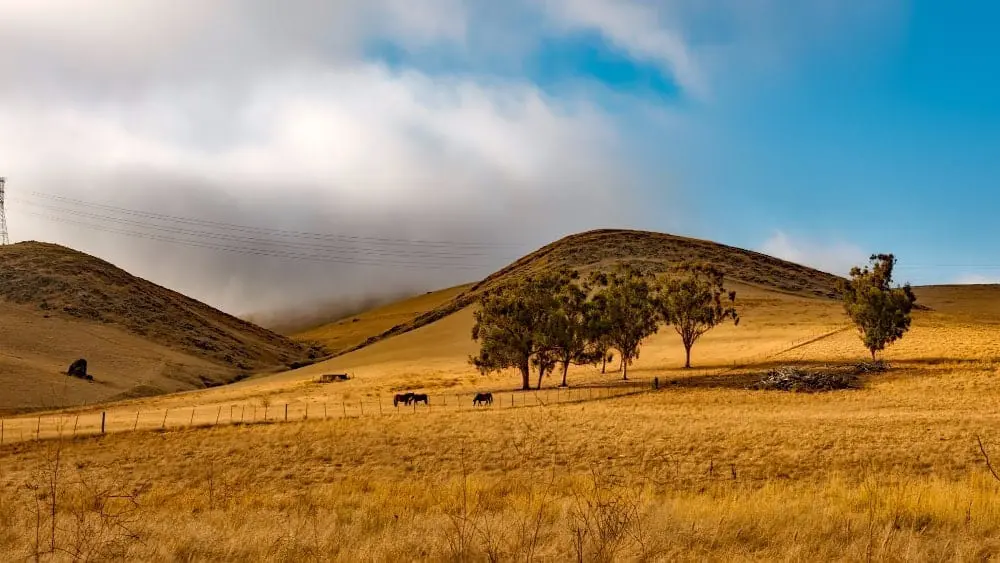
Whether you are a first-time farm owner or an experienced veteran, it’s completely normal to dread a drought. Fears of dry, cracked earth and parched livestock are concerning for all landowners in rural areas.
The slow approach of a drought can mean uncertainty and wariness for farmers, who may hope that the winds will change and rain will pour down to soak the grounds at the last minute. Unfortunately, if that miraculous rainfall does not come, there is not much left that farmers can do to salvage their crops and livestock.
If you live in an area where the potential for drought is high, don’t wait. The best time to prepare for a drought or a particularly dry season is now. First, assess your water needs, then draw up a drought plan for conserving your water supply. Here are five water-saving tips to get you started.
Invest in High-Efficiency Appliances
Try to conserve water in any way you can, starting with areas of your biggest water usage: your appliances. When possible, invest in high-efficiency dishwashers, washing machines and toilets. These will help you to save both energy and water year-round.
If you are unable to invest in high-efficiency appliances, you can still be conscientious of your water usage. Be sure to only run your washing machine when you have a full load, or adjust the water level to fill just above the clothing line. Keep faucets turned off when brushing your teeth and shaving, and turn off your shower in between rinses. You might also consider a low-flow showerhead for minimal water output.
When washing dishes, skip the pre-rinse in the sink prior to the dishwasher. If you do not use a dishwasher, fill two buckets in the sink, one for the soapy dish water and one for a clean rinse with a safe disinfecting agent, so you’re not constantly using the faucet.
Repair Any Leaks
It’s amazing how much water is lost from a dripping faucet. If you allowed your sink to drip one drop of water per second continuously, this would lead to 2,700 gallons of water wasted per year! Prevent any leaks by regularly replacing the washers on all faucets.
Check your home for potential water leaks by taking a reading of the water meter. If you refrain from using water and then take a new reading in a half hour, your meter should read the same. If it does not, then chances are high that you have a leak. You should find the leak and have it repaired as quickly as possible.
Install Rain Collection Systems
When you live in an area that is prone to drought, it is critical to conserve drinking water for, well, drinking! It is counterintuitive and possibly irresponsible to use the drinking water supply for irrigation and purposes other than human consumption. However, you will need a water supply for tending to crops, washing and irrigation. Some homeowners have found rain collection systems to be a productive way to reuse rainwater for natural irrigation of crops.
There are several options for setting up a rain collection system, but the most popular is a simple water barrel due to its easy set up. Barrels tend to hold around 50 to 100 gallons can easily overflow; they can be purchased resale or at your local hardware store. If you are in need of something larger, you might consider a more complex rain collection system.
Rain collection is legal by federal regulations, but different areas of the United States stipulate different rules regarding the topic. Be sure to check with your local or county authorities to be sure you are in the clear before setting up your system.
Rotate Crops
Maintaining the right amount of soil moisture is key to keeping a balanced crop in the dry seasons. You might consider keeping a compost pile year-round to lay on top of the soil. This will provide nutrient-rich, fresh soil to nourish your crops throughout the year. Some landowners have also been able to retain soil moisture by planting crops closer together and layering with mulch.
If you have seasonal plantings that require varying amounts of water and dryness in the soil, you might consider rotating your crops to keep your soil balanced. For instance, if one set of crops depletes the soil of nutrients and water, leaving the area parched and desolate, you can replant a different crop that requires minimal recharge to give the soil time to replenish.
Prepare Your Livestock
Owning any animals can pose a serious concern for many homeowners during seasons of drought. If you live in a dry area with little rainfall, it is crucial to prepare well in advance to avoid any loss of animals or profit.
Livestock owners can prepare by stocking up on food supply very early. Keep extra hay on hand to feed livestock when drought causes your pasture to slow down growth. Without water in the pasture, the grasses will not grow fast enough to keep up with grazing. Be sure to keep extra food supply in a cool, dry area.
Additionally, you will want to be sure that all animals have a readily available water supply. If your cattle’s watering hole is actually a shallow rim on the far side of the pasture, this will not be sustainable. Your animals will need adequate shade, ventilation and water to survive high temperatures and dry heat.
Interested in more helpful tips for making the most out of your country abode? Check out more resources on rural living and farm life at NewHomeSource.com.

Melanie Theriault is a writer, counselor, and lifelong learner. She holds a B.A. in Sociology from Southwestern University, where she discovered her passion for fostering human connection through storytelling.
 Rural Living: 6 Smart Solutions for Outdoor Storage
Rural Living: 6 Smart Solutions for Outdoor Storage